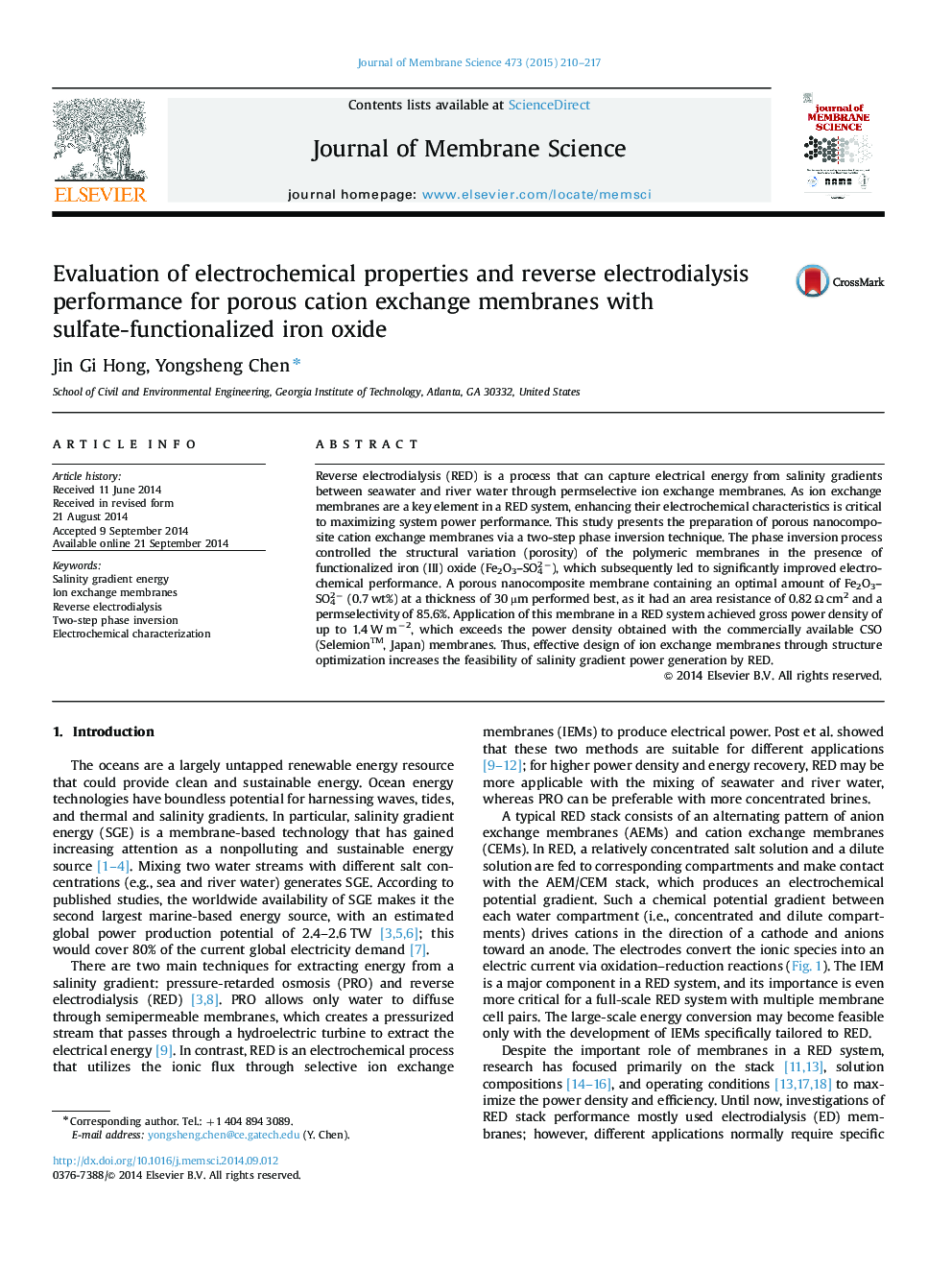| Article ID | Journal | Published Year | Pages | File Type |
|---|---|---|---|---|
| 633378 | Journal of Membrane Science | 2015 | 8 Pages |
•Synthesis and application of porous nanocomposite cation exchange membranes for RED power generation.•Structural variation and nanoparticle loadings significantly enhanced the electrochemical properties.•Area resistance was highly dependent on thickness and porosity of the membranes.•Reduction of membrane thickness improved 45% of gross power density.
Reverse electrodialysis (RED) is a process that can capture electrical energy from salinity gradients between seawater and river water through permselective ion exchange membranes. As ion exchange membranes are a key element in a RED system, enhancing their electrochemical characteristics is critical to maximizing system power performance. This study presents the preparation of porous nanocomposite cation exchange membranes via a two-step phase inversion technique. The phase inversion process controlled the structural variation (porosity) of the polymeric membranes in the presence of functionalized iron (III) oxide (Fe2O3–SO42−), which subsequently led to significantly improved electrochemical performance. A porous nanocomposite membrane containing an optimal amount of Fe2O3–SO42− (0.7 wt%) at a thickness of 30 µm performed best, as it had an area resistance of 0.82 Ω cm2 and a permselectivity of 85.6%. Application of this membrane in a RED system achieved gross power density of up to 1.4 W m−2, which exceeds the power density obtained with the commercially available CSO (SelemionTM, Japan) membranes. Thus, effective design of ion exchange membranes through structure optimization increases the feasibility of salinity gradient power generation by RED.
